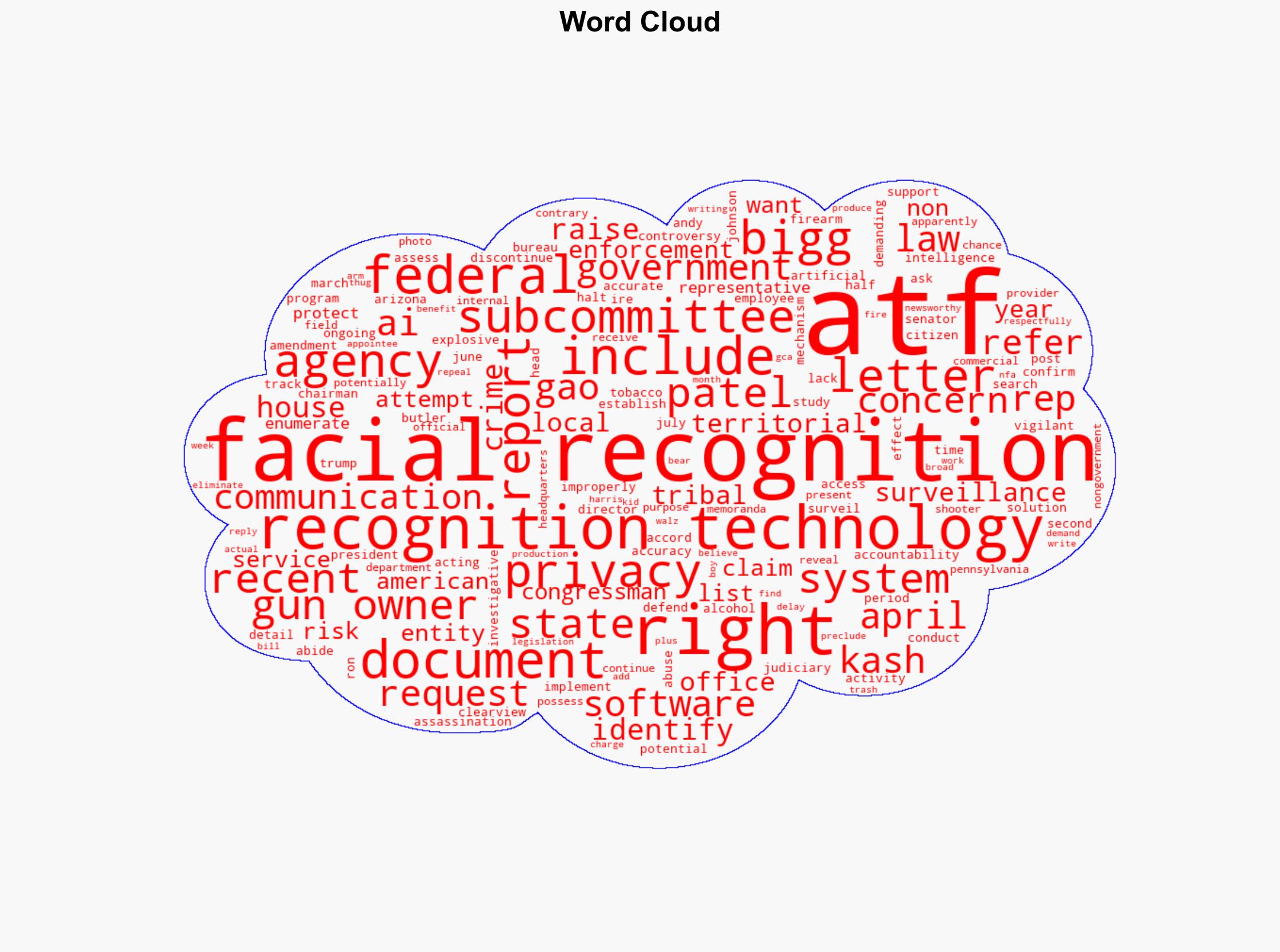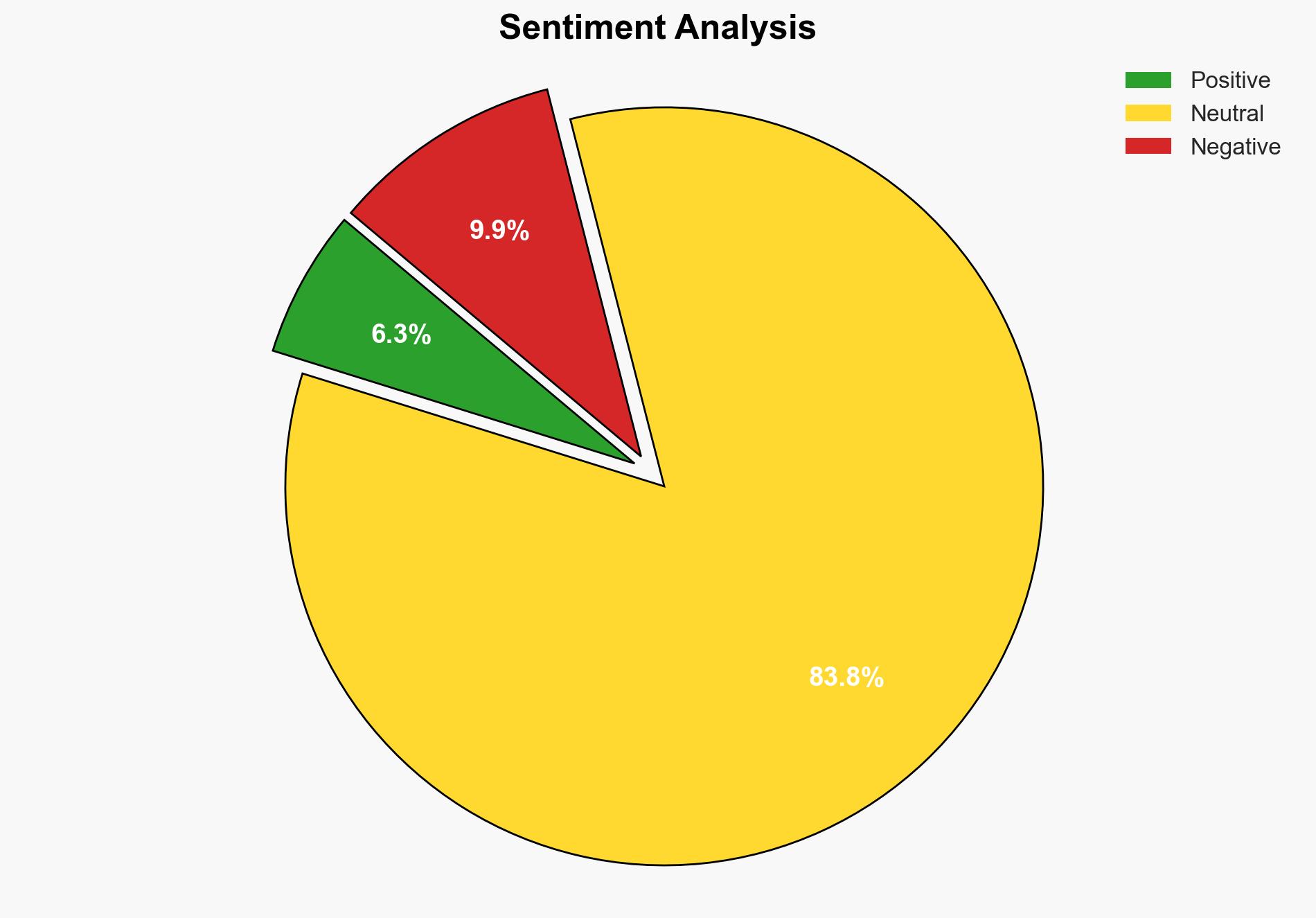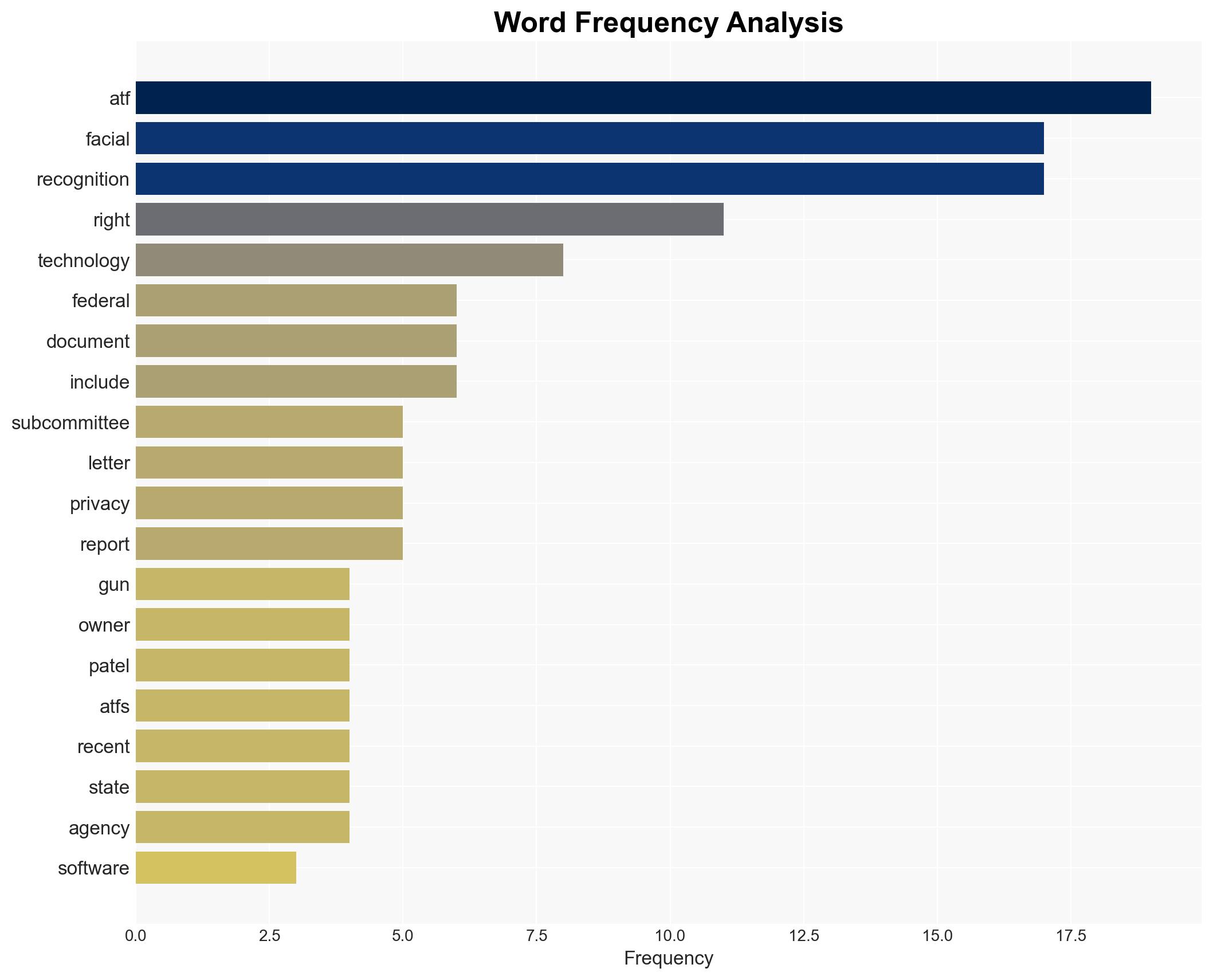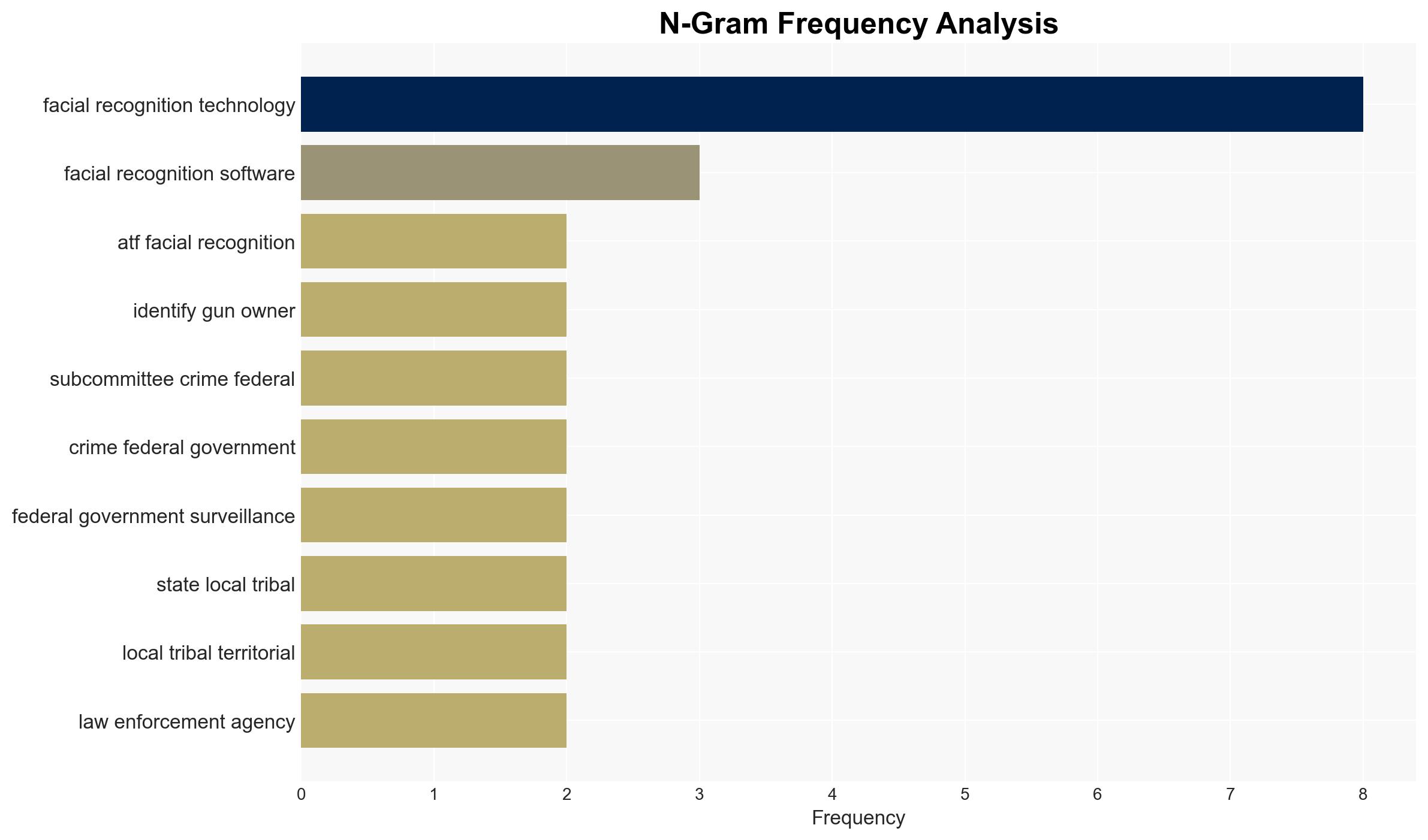Congressman Writes Letter To ATF Over Facial Recognition Use To Identify Gun Owners – The Truth About Guns
Published on: 2025-04-03
Intelligence Report: Congressman Writes Letter To ATF Over Facial Recognition Use To Identify Gun Owners – The Truth About Guns
1. BLUF (Bottom Line Up Front)
The ongoing controversy surrounding the use of facial recognition technology by the ATF to identify gun owners has prompted Andy Biggs to demand transparency from the agency. Concerns focus on potential infringements on privacy and Second Amendment rights. The ATF’s use of systems like Clearview AI has been highlighted, with calls for documentation on the agency’s practices and partnerships. Immediate action is recommended to address privacy concerns and ensure compliance with federal regulations.
2. Detailed Analysis
The following structured analytic techniques have been applied for this analysis:
General Analysis
The ATF’s use of facial recognition technology has raised significant privacy and constitutional concerns. Andy Biggs has highlighted the potential misuse of such technologies, citing a GAO report that underscores the lack of established mechanisms to track non-federal systems. The report also indicates the ATF’s continued use of facial recognition despite claims of discontinuation. This situation underscores a need for greater oversight and transparency in the deployment of surveillance technologies by federal agencies.
3. Implications and Strategic Risks
The use of facial recognition technology by the ATF poses several strategic risks, including:
- Potential violation of privacy rights, leading to public distrust in federal agencies.
- Challenges to Second Amendment rights, potentially inciting political and social unrest.
- Legal and regulatory repercussions if the ATF is found to be non-compliant with federal guidelines.
These risks could undermine national security and regional stability, as well as affect economic interests by impacting public perception and trust in governmental institutions.
4. Recommendations and Outlook
Recommendations:
- Conduct a comprehensive audit of the ATF’s use of facial recognition technology to ensure compliance with privacy laws and federal regulations.
- Implement stricter oversight mechanisms to monitor the use of surveillance technologies by federal agencies.
- Engage with stakeholders to address privacy concerns and reinforce public trust in governmental operations.
Outlook:
In the best-case scenario, increased transparency and regulatory compliance could restore public trust and mitigate privacy concerns. In the worst-case scenario, continued misuse of facial recognition technology could lead to significant legal challenges and public backlash. The most likely outcome involves a gradual implementation of oversight measures, balancing technological advancement with privacy rights.
5. Key Individuals and Entities
The report mentions significant individuals and organizations, including:
- Andy Biggs
- Kash Patel
- Ron Johnson
- Entities such as the ATF and GAO





